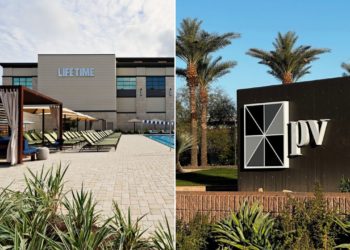When Tom and Ethel Bradley moved with their two young daughters into a modest three-bedroom home in Leimert Park in 1950, Black people were restricted from buying houses in the neighborhood. The Bradleys had to purchase the home through a white buyer likely affiliated with the American Civil Liberties Union, recalled their oldest daughter, Lorraine Bradley, who was almost 7 years old at the time.
“It was the very first time that a Black family moved into Leimert Park,” said Lorraine, explaining the immediate historic significance of the home, and adding that her parents were brave people who believed integration was essential to equality. “My parents understood the implications of that. They were willing to sacrifice themselves in many regards.”
For the first year, white children on the street wouldn’t play with Lorraine or her 5-year-old sister, but that slowly changed and the family became accepted in the neighborhood. It helped that Tom was a police officer, said Lorraine.
Tom and Ethel explained to their children that, “unless people understood and lived with you, they would only look at you racially and not as a person,” said Lorraine.
The 1,282-square-foot home — where the Bradleys lived until 1977, when Tom became the first Black mayor of Los Angeles and moved the family into the 10,000-square-foot Getty House — is among six buildings of deep importance to Black heritage in L.A. that have been designated Historic Cultural Monuments as part of a project led by the Getty in collaboration with the City of Los Angeles’ Office of Historic Resources.
“We are thrilled for everyone to recognize the courage that my parents took to move to that neighborhood,” said Lorraine. “Somebody had to, so my dad and mom decided it was them.”
The additional sites to receive landmark status are Stylesville Barbershop & Beauty Salon in Pacoima; St. Elmo Village and Jewel’s Catch One in Mid-City; the California Eagle newspaper in South L.A.; and New Bethel Baptist Church in Venice.
The designations are the culmination of ongoing work done by African American Historic Places, Los Angeles, which was launched by the city and Getty in 2022 with the goal of identifying, memorializing and protecting the city’s Black heritage and history.
Each site will receive its own plaque. Celebrations are set for later this month at the Bradley residence, St. Elmo Village and Jewel’s Catch One. Stylesville is planning a party for a later date.
AAHPLA hosted a kickoff event at St. Elmo Village in 2023, but work to create the project began in 2020 after the murder of George Floyd when many cultural organizations, including Getty, began reevaluating the ways they were highlighting and interacting with Black history, art and heritage, said Rita Cofield, associate project specialist at the Getty Conservation Institute and AAHPLA project leader.
Getty soon decided to implement an initiative focused on African American heritage in L.A. and began looking for partners in the community who could help best identify each unique location.
In some cases, unless you have roots in a particular community, you won’t have the depth of understanding to realize that even though a particular building looks commonplace — or isn’t built in high architectural style — that it’s actually extremely important, said Cofield.
The plaques, in conjunction with the program, will help further establish the locations and their history in the popular imagination — and also serve to protect the sites from harm or demolition.
“If you see a plaque with the date and the importance of it, you’ll get some sense of just what this neighborhood was — what this building was or still is,” said Cofield. “So you connect with it on your own. You can investigate on your own at any time and it’s accessible.”
Angelenos and visitors to the city can now make a day out of touring the sites. In the process, they will learn about how the California Eagle — established by John J. Neimore in 1879 — was home to one of the oldest and longest-running Black-owned and operated newspapers in the country; how St. Elmo Village is still a thriving arts community and center for community activism; how Stylesville barbershop is the oldest Black-owned barbershop in the San Fernando Valley; how Jewel’s Catch One was the oldest Black-owned disco in the U.S., as well as one of the city’s first gay nightclubs to open its doors to LGBTQ+ people of color; and how the establishment of New Bethel Baptist Church marked the early days of Black migration to the Oakwood neighborhood.
Moving forward, AAHPLA will continue to seek out sites that would benefit from landmark status, while also investing in Pacoima, Oakwood and the Central Avenue corridor — famous for its vibrant jazz and music scene — in order to develop better cultural preservation strategies.
“We really want to celebrate intangible heritage too,” said Cofield. “How do we do that? Do we do it through schools, through murals? So we’re really working with those neighborhoods, to think of strategies to celebrate and highlight African American heritage.”
The post Tom and Ethel Bradley house among Black heritage sites in L.A. designated cultural monuments appeared first on Los Angeles Times.




